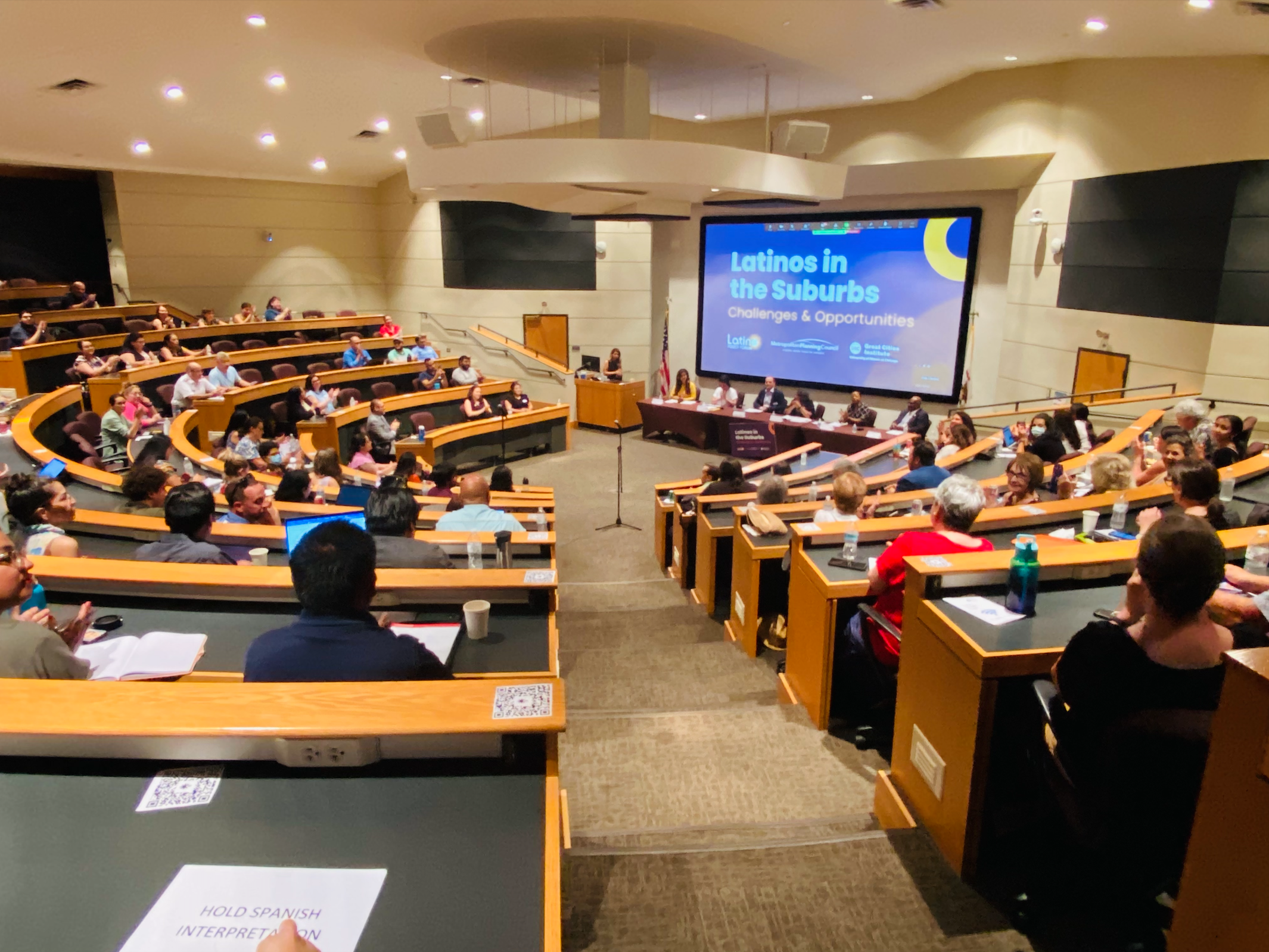Little Village, Humboldt Park, and Pilsen are just some neighborhoods that exemplify communities known for high-volume of Latinos. When asked to point to where Latinos in Illinois live, one might describe 26th Street, adorned by the famous terracotta arch. But while Chicago is undeniably rich with Latino culture, more than 50% of Illinois’ Latinos reside in the suburbs.
Latinos in the Suburbs: Challenges & Opportunities is a collaborative project by the Latino Policy Forum, Metropolitan Planning Council and UIC Great Cities Institute which studied issues Latinos living outside of the city limits face, their growth compared to non-Latino neighbors and what improvements can be made. The organizations and community members met at Elgin Community College Thursday to present key findings of the report.
1.2 million Latinos currently live in the suburbs, which has happened at a rapid pace. From 2010 to 2020, only 16% of the Latino population growth in the Chicago metropolitan area happened within the city of Chicago, while 84% occurred in the suburbs. According to the report, much of this growth exists in areas with traditionally lower percentages of Latino residents.
The experience of Latinos in the suburbs is referred to throughout the report as paradoxical. They are significantly driving the labor force, homeownership rates, and population growth, though these contributions are not fully reflected in their daily lives. For example, While 47% of Latino suburban households earn more than $75,000, they are still twice as likely to live in poverty as are non-Latinos.
“This project is unique in painting a picture of the successes and contributions Latinos are making to the socio economic fabric of the suburbs while, at the same time, illustrating the challenges Latinos face in securing their own socioeconomic well-being and stability. For example, 6 in 10 Latinos live in high or very hardship suburbs…” said Sylvia Puente, President and CEO of the Latino Policy Forum.
These communities drive economic growth in their areas. In 2019 Illinois’ Latinos had a spending power of $68 billion which is projected to grow between 2021 to 2026 at a rate 50% greater than for white people in the state.
“I care if you pay me $40 an hour, and we all will live well, and the economy will be better. Because the flow of money will go from the bottom up. If I earn $20 an hour, I will buy something, but if I earn $40 an hour, I will buy two things and will provide for the economy, and the businessmen will get paid somehow. I will be a frequent client because I have more money flow,” said one Latina participant in the study.
“This report makes clear that Latinos play a crucial role in our region’s health and vitality,” said Daniel Cooper, Senior Director of Research, Metropolitan Planning Council. “The Latino population is growing faster in the suburbs than anywhere else in the state. We need to ensure that this growth brings health, opportunity, and political voice and representation for the diverse Latino families in our region.”
One issue Latinos face in moving to the suburbs is commuting and transportation.
“We don’t have 24/7 public transportation like in Chicago. A lot of us don’t have any other way to travel. If we need to go someplace, at an hour where there is no transportation available, we have to wait 30 or 50 minutes to catch public transportation,” said one participant.
The study found that costs for transportation can account for as much as 30% of moderate-income households’ budgets.
“This report adds to the growing recognition of the importance of Latinos to the Chicagoland economy as employees, homeowners, consumers, and more,” said Teresa Cordova, Director of the Great Cities Institute, UIC. “We learn from applying the Great Cities Institute Hardship Index that the growing opportunities for Latinos in the suburbs are also accompanied by needs that require policy attention.”
Read the full Latinos in the Suburbs: Challenges & Opportunities here.
